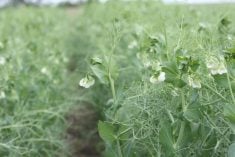Canada’s food and feed safety regulator has defended its decision to label a new barley variety as a “novel feed,” which has delayed its commercial introduction.
The Canadian Food Inspection Agency says a low phytate barley developed at the University of Saskatchewan clearly fits the definition of novel.
“Based on the information from the developers, the HB379 barley has a trait that is outside the normal range of what is normally found in barley and therefore has triggered the novel feed regulations,” said Annie Savoie, biotechnology co-ordinator for the agency’s feed section.
Read Also

Saskatchewan Co-ops to acquire Blair’s locations
Blair’s Family of Companies will be turning over the operation of six ag retail locations in Saskatchewan to local Co-ops
The decision to label HB379 a novel feed has sparked a war of words between the university’s Crop Development Centre and the federal regulator.
The CDC was to hold a public meeting on April 23 to air its complaints and seek advice from other industry stakeholders.
Savoie declined to go into detail about what makes the barley novel, citing confidentiality requirements, but she acknowledged it is clearly related to phosphorus content, which is the new variety’s big selling point.
The two-row hulless feed barley contains the same amount of phosphorus as other varieties but has 75 percent less phytate.
In conventional barley varieties, about 70 percent of the phosphorus is in the form of phytate, or phytic acid. Pigs have difficulty digesting phytate, so most of the phosphorus ends up in their manure.
Supporters of the new variety, including plant breeder Brian Rossnagel of the CDC, say it provides benefits to producers by lowering input costs and to the environment by reducing the amount of phosphorus excreted in manure.
Savoie disputed suggestions from the CDC that there is no scientific basis for the agency’s decision.
“Our decision is science-based, using the scientific information that was given to us by Dr. Rossnagel.”
She also rejected suggestions by CDC officials that the CFIA’s approach to novelty will limit the ability of plant breeders to bring innovative new products to market.
Being labelled a novel feed does not prevent a new variety or product from being approved and registered for commercial use, said Savoie, noting the agency has approved more than 60 plant-based novel feeds and more than 80 from microbial sources.
When a new feed product is categorized as novel, it must undergo a pre-market assessment to determine potential risk or harm to livestock, human handlers of the product and the environment.
Depending on the results of that assessment, the new product can be approved, approved with certain risk management conditions or rejected.
Savoie said if Rossnagel wants HB379 approved, he should submit the product to that risk assessment, which would take several months.
“We have communicated that process to Dr. Rossnagel, that that would be the next step to gain approval,” she said.
On April 19 Savoie said she didn’t know if CFIA representatives would attend a planned April 23 meeting in Saskatoon. She said the agency would prefer to have a private meeting with Rossnagel to discuss the situation.
“At a public meeting we are bound by confidentiality not to discuss certain issues.”
















